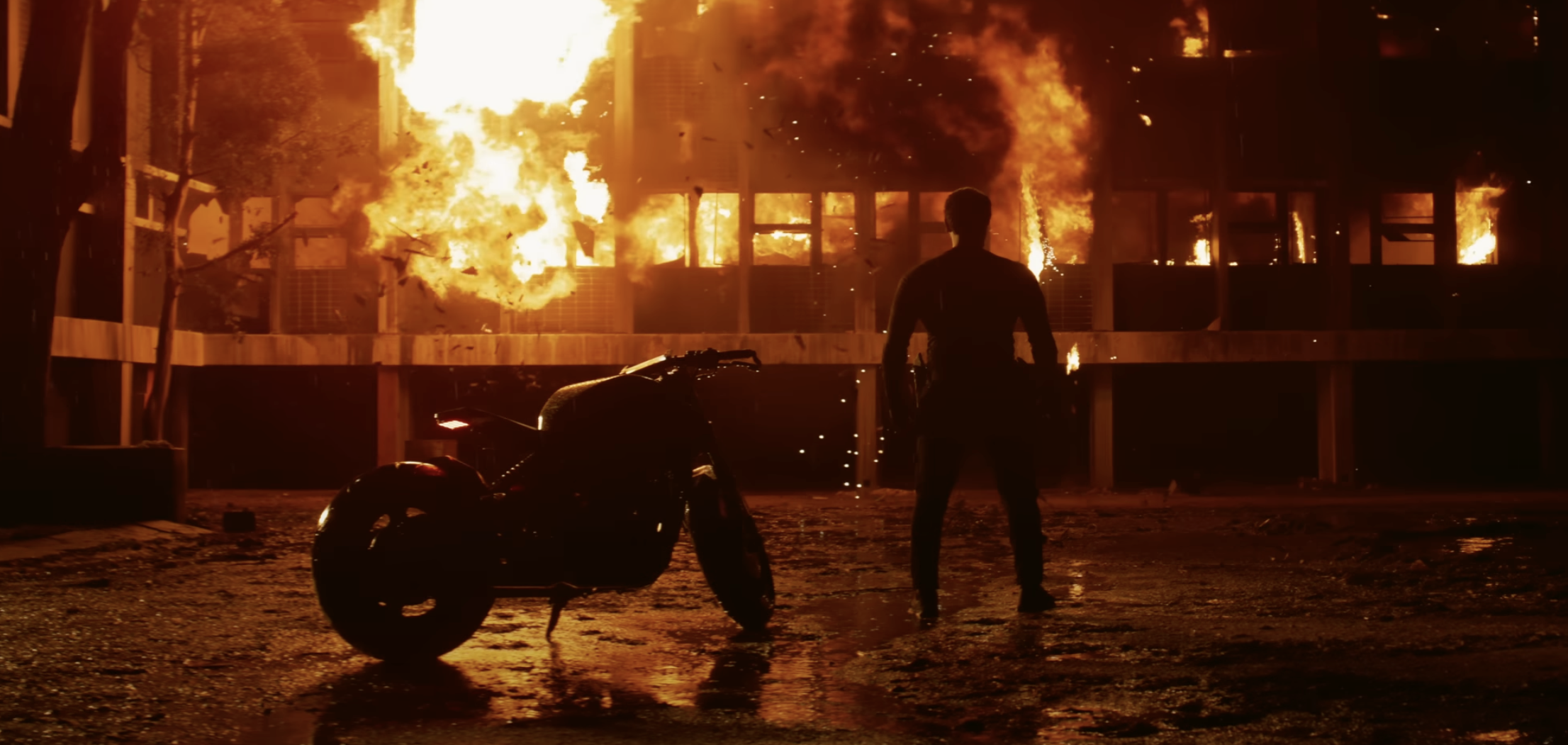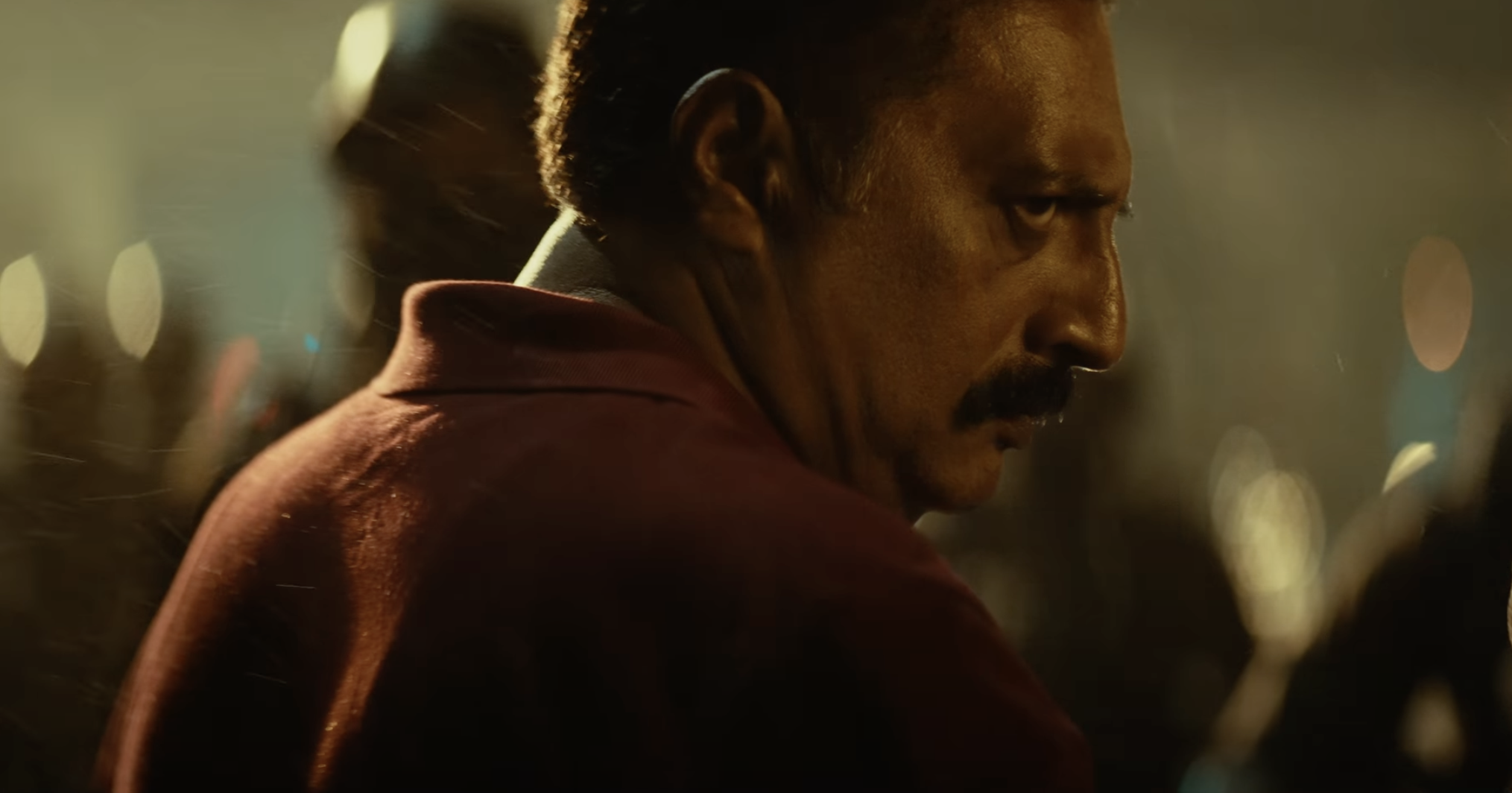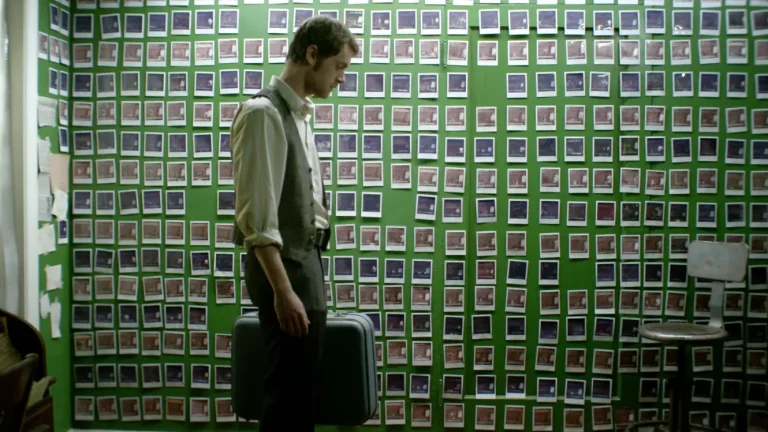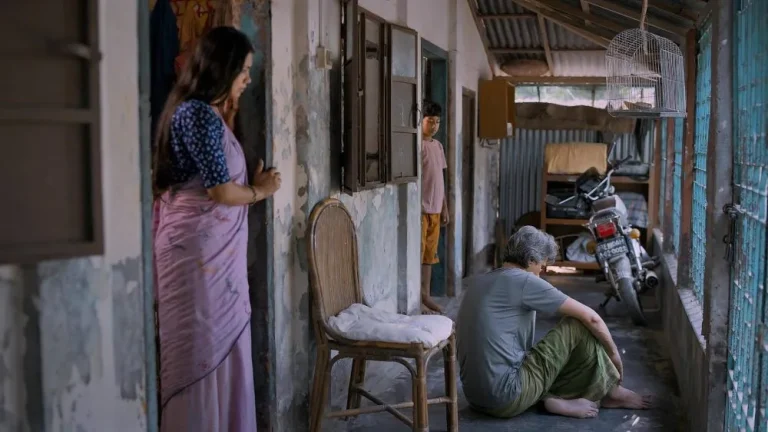The deeper you explore Kannada action thrillers, the more evident it becomes that the industry is grappling with a creative drought, which could pose significant challenges in the future. D.R. Suri’s Bagheera stands as a prime example of this stagnation. The film borrows heavily from the stylistic editing of K.G.F. but falls short of delivering the same impact. Its narrative treads familiar ground, rehashing the well-worn trope of a lone hero taking on corruption and the criminal underworld.
The film continues the trend of overusing dark aesthetics, with Bagheera clad in a black mask and a full-sleeved black outfit. Unfortunately, the mask’s design lacks originality, evoking comparisons to Krrish and made worse by the distracting visibility of its elastic strap. Creating a superhero film demands bold innovation, especially when even Hollywood struggles to craft compelling stories in this genre. Films like Maaveeran, Minnal Murali, or Mard Ko Dard Nahi Hota demonstrate how originality and thoughtful storytelling can breathe new life into such concepts.
Despite its shortcomings, Bagheera offers a moderately engaging experience, making it a passable one-time watch. But what challenges does Bagheera confront? And how does he rise above them? Let’s delve into the plot to uncover how it all unfolds.
Spoilers Ahead
Bagheera (2024) Plot Summary and Movie Synopsis
Why Does Vedanth Want to Become a Police Officer?
As a child, Vedanth Prabhakar dreamed of becoming a superhero. However, his perception changes when his mother, on her deathbed, teaches him the value of ordinary people as real heroes. She emphasizes that police officers embody this heroism, inspiring Vedanth to follow in his father’s footsteps and serve as a protector of society. This emotional moment becomes a turning point, redefining Vedanth’s childhood fantasies into a practical, noble ambition.
Years later, Vedanth joined the police force, starting his career in Mangalore. Here, he meets Sneha, a spirited and independent doctor. Their mutual respect and shared values blossom into love, leading to their engagement. Vedanth’s personal happiness complements his professional dedication, driving him to organize a major operation to clean up Mangalore’s criminal underworld.
Vedanth’s belief in justice is tested when the gangsters he arrests are freed due to corruption in the police department. The revelation of his father’s involvement devastates him. The contrast between his mother’s ideals and his father’s actions raises questions about institutional decay and personal integrity. Vedanth’s initial dream to be a hero is now weighed against the harsh realities of systemic corruption, setting up a complex emotional and moral conflict.
What Makes Vedanth Wear the Mask?
As an idealistic police officer, Vedanth believes in justice and integrity. However, his arrest of the notorious gang leader Poojari triggers a backlash from his superiors, who demand the gangster’s release. Vedanth is baffled by the system’s corruption, which prioritizes protecting powerful individuals rather than delivering justice. His boss reveals that Poojari’s influence extends deep into the ranks of police and politicians, shaking Vedanth’s faith in the institution he serves.
Learning that Prabhakar paid bribes to secure Vedanth’s police accolades and cushioned their family’s lifestyle, including his mother’s cancer treatment, shatters Vedanth’s idealized image of his father. This personal betrayal leaves Vedanth questioning the moral foundation of his upbringing and his place in a system riddled with corruption.

Vedanth’s breaking point comes when a woman, desperate to file a complaint against Poojari’s men for kidnapping her daughter, is turned away by the police. When the daughter is brutally raped and later kills herself by self-immolation in front of the police station, Vedanth is overcome with guilt and rage. The woman’s curses and the systemic failure haunt him, forcing him to confront the inadequacy of lawful measures.
Unable to rely on a corrupted system, Vedanth takes matters into his own hands. On the same night, he dons a black mask and brutally eliminates Poojari’s men responsible for the heinous act. The mask symbolizes his rejection of the system and his adoption of a vigilante persona. The lone witness to his actions, a child, names him Bagheera, marking the rise of a shadowy figure who delivers justice beyond the confines of the law.
Why Does Guru Want to Catch Bagheera?
Guru, a senior CBI officer, is not motivated purely by law enforcement when he targets Bagheera. His pursuit of the vigilante stems from a deeply personal desire for revenge. Bagheera killed Guru’s son, Siddhi, a corrupt police officer implicated in the murder of Ranganna, an honest journalist. While Siddhi’s actions were unlawful, Guru views Bagheera as the executioner of his son and holds him responsible for Siddhi’s death. Guru’s transfer to Mangalore, orchestrated by his brother Ramakanth Appayya, is not merely a professional assignment. It is a calculated move to settle this personal vendetta.
Guru represents a conflict of morals in the narrative. Despite being a senior officer sworn to uphold justice, his motives are clouded by his emotional ties to his son. Siddhi’s corrupt actions and involvement in heinous crimes are irrelevant to Guru’s pursuit. His focus remains on avenging his son rather than addressing Siddhi’s misdeeds. This blurs the line between justice and vengeance, adding complexity to Guru’s character.
As a high-ranking officer, Guru’s investigation into Bagheera’s identity showcases his professional expertise. He methodically unravels Vedanth’s secret through careful deduction, but his vendetta transforms the chase into a personal crusade. Instead of bringing Bagheera to justice, Guru’s obsession with avenging Siddhi highlights a misuse of power and a deeply flawed sense of duty.
How does Guru Find Out Bagheera’s True Identity?
Guru initiates his investigation by analyzing complaints filed against Bagheera across the country. Narayan, Vedanth’s subordinate, discreetly deletes the ones registered in their station to avoid drawing attention. Despite this, Guru identifies a pattern: individuals with complaints filed against them in Vedanth’s jurisdiction are consistently found dead on the same night. This observation narrows Guru’s focus and raises suspicions about Vedanth.
Further clues emerge when Guru retrieves a blurry image of Bagheera captured during one of his attacks. Although unclear, the image provides enough material for comparison. Guru meticulously examines footage of Vedanth during his police academy training days. He notes striking similarities in body structure and the way both Vedanth and Bagheera hold their guns. These subtle yet distinct traits strengthen Guru’s suspicion that Vedanth is operating as Bagheera.
However, a mole in Guru’s team leaks Vedanth’s identity to Rana, the organ trafficking kingpin. This escalation leads to catastrophic consequences, as Rana uses this information to target Vedanth, ultimately resulting in Sneha’s tragic death. Guru’s discovery, though accurate, inadvertently sets off a chain of events that deepens the conflict and loss in Vedanth’s life.
Bagheera (2024) Movie Ending Explained:
What Does Guru Do to Bagheera?

After Bagheera is captured, Guru and his team take him to a secluded area, seemingly preparing for an encounter killing. While Bagheera is a hero to the public, his vigilante actions make him a liability to the law enforcement system. However, Guru’s squadmate hesitates to kill him, believing Bagheera’s actions align with the police’s duty to rid society of criminals.
This hesitation exposes a rift within the team, leading to the revelation of a mole who is secretly working for Rana, the organ trafficking kingpin. Following Guru’s covert orders, the squadmate kills the corrupt officer, effectively saving Bagheera. Guru, though outwardly committed to the law, harbors a quiet admiration for Bagheera’s mission. He submits a false report to his brother, the CBI director, claiming he could not apprehend Bagheera.
This deception reflects Guru’s internal conflict. He knows Bagheera’s methods defy the law, but he supports the vigilante’s effectiveness in delivering justice where the system fails. Guru’s decision to protect Bagheera stems from his belief that the vigilante’s fearlessness and freedom from bureaucratic constraints make him a necessary force against rampant corruption and crime.
What Happens to Rana?
Guru doesn’t merely let Bagheera go. He actively aids him by revealing critical information about Rana’s plans to traffic innocent people through a coastal town. Recognizing Bagheera’s lack of jurisdictional constraints, Guru ensures the vigilante can act decisively without interference. Armed with Guru’s intelligence, Bagheera intercepts a moving train, eliminates Rana and his men, and rescues the captives.
Guru’s intentions become clear when media personnel, likely tipped off by him, arrive to cover the rescue. By ensuring the survivors speak to the press, Guru helps amplify Bagheera’s legend. This strategic move aims to instill fear in criminals across the country, leveraging Bagheera’s mythos as a shadowy figure who delivers ruthless justice.
Guru’s decision to spare and support Bagheera is driven by pragmatism and a shared goal of eradicating crime. While the law binds Guru, Bagheera’s freedom to act outside it makes him a powerful tool in the fight against evil. This unlikely alliance highlights the nuanced relationship between justice, legality, and morality.
Will There Be a Bagheera Part 2?
The conclusion of “Bagheera” strongly suggests a sequel. Guru’s report to the Central Railway Minister exposes corruption within the railway system and his bold warning to the minister about Bagheera’s wrath hints at further confrontations. By leveraging Bagheera’s vigilante persona, Guru sets the stage for ongoing battles against corruption.
The dynamic between Guru and Bagheera remains unresolved. Guru’s use of Bagheera as a weapon against the corrupt implies that their alliance will continue to evolve. The growing legend of Bagheera also leaves room for new threats and storylines. A second installment would naturally delve deeper into Bagheera’s fight for justice and Guru’s strategic maneuvers.



![Appathava Aattaya Pottutanga [2021] Review: As Muddled As the Message It Tries to Deliver](https://79468c92.delivery.rocketcdn.me/wp-content/uploads/2021/10/Appathava-Aattaya-Pottutanga-Movie-Review-1-768x431.jpg)



